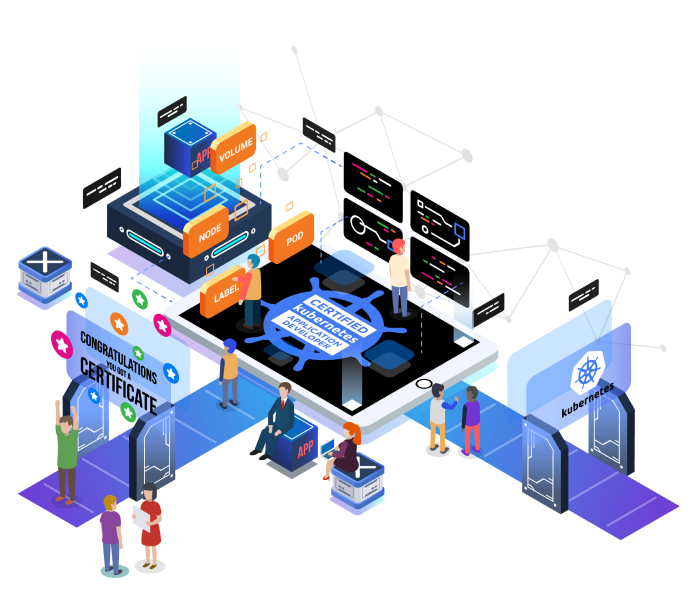Kubernetes Core Architecture
This course delves into the fundamental concepts of the Kubernetes architecture. The course begins with an overview of Pods, the smallest unit of Kubernetes, and how to interact with them. Next, we discuss ReplicaSets and Labels, which are used to make copies of Pods and identify them. The course continues with a detailed discussion on Deployments, DaemonSets and Namespaces, used to manage applications and services in Kubernetes. We will also discuss using EmptyDir and Dynamic Storage Provisioning, which provide dynamic storage management in Kubernetes.
The course then moves on to managing services through the use of Services and Ingress Rules, which allow you to expose services outside the cluster. We then cover the topic StatefulSet, which allows you to create stateful applications in Kubernetes. The course concludes with a discussion on Etcd Snapshots and Cluster Maintenance, which are essential to keep a Kubernetes cluster healthy and ensure the availability of hosted services. By the end of the course, students will have acquired a solid understanding of the basic architecture of Kubernetes and best practices for its management and maintenance.
COD: DSK103
Category: Kubernetes

Teaching methodology
The course includes educational laboratories in which each student will be able to work in order to complete training exercises that will provide practical experience in using the instrument, for each of the topics covered during the course.
Prerequisites
- Basic knowledge of Linux operating system and command line concepts
- Understanding of the basics of virtualization and containerization
- Experience with managing applications and services on a cloud platform
- Basic knowledge of network concepts and client-server architecture
- Basic knowledge of some application architecture concepts such as load balancing, high availability, scalability and storage management
At the end of the course the participants will be able to:
- Gain in-depth knowledge of the core architecture of Kubernetes
- Learn how to manage Pods and ReplicaSets to scale applications in Kubernetes
- Use Labels, Deployments, and Namespaces to organize and manage your applications in Kubernetes
- Understand the use of EmptyDir and Dynamic Storage Provisioning to manage dynamic storage in Kubernetes
- Learn how to manage services in Kubernetes using Services and Ingress Rules
- Understand the use of StatefulSets to build stateful applications in Kubernetes
- Gain working knowledge of Etcd Snapshots backups and cluster maintenance
- Learn best practices for managing and maintaining a Kubernetes cluster
Educational program
- Pods
- Interaction with Pods
- ReplicaSet
- Label
- Deployment
- DaemonSets
- Namespace
- EmptyDir
- Dynamic Storage Provisioning
- Services
- Ingress Rules
- StatefulSet
- Etcd Snapshots
- Cluster maintenance
Duration – 2 days
Delivery – in Classroom, On Site, Remote
PC and SW requirements:
- Internet connection
- Web browser, Google Chrome
- Zoom
Lingua
- Instructor: English
- Workshops: English
- Slides: English
The price of this 1-day course is €700 + VAT.











